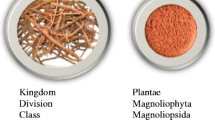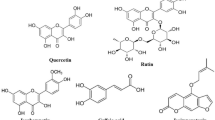Abstract
The presence of copper and iron in metal-doped wool has been shown previously to be associated with the production of free radicals and yellowing in photo-irradiated wool. In this study, the yellowness and trace metal content of 700 wool samples was measured to determine if photoyellowing, catalysed by metals, is a major determinant of the colour of fleece wool. Iron and copper content did not positively correlate with yellowness and yellower wool tended to have lower levels of these metals. Instead, a strong positive correlation of yellowness with the calcium, manganese and magnesium content was observed in yellow wools. High levels of calcium and magnesium is consistent with biofilm formation by Pseudomonas bacteria that have previously been associated with non-scourable staining of wool.

Similar content being viewed by others
References
Fleet MR, Millington KR (2008) Regional dependence of wool colour on copper status. Int J of Sheep and Wool Sci 56(1):18–32
Lee HJ (1956) The influence of copper deficiency on the fleeces of British breeds of sheep. J Agric Sci 47(02):218–224. doi:10.1017/S0021859600040144
Fouda TA, Youssef MA, El-Deeb WM (2011) Correlation between zinc deficiency and immune status of sheep. Vet Res 4(2):50–55
Chandra RK (1997) Nutrition and the immune system: an introduction. Am J Clin Nutr 66(2):460S–463S
Gogolewski RP, Nicholls PJ, Mortimer SI, Mackintosh JA, Nesa M, Ly W, Chin JC (1996) Serological responses against Pseudomonas aeruginosa in Merino sheep bred for resistance or susceptibility to fleece rot and body strike. Aust J Agric Res 47:917–926
Merritt GC, Watts JE (1978) The changes in protein concentration and bacteria of fleece and skin during the development of fleece-rot and body strike in sheep. Aust Vet J 54(11):517–520
James PJ, Ponzoni RW, Walkley JRW, Smith DH, Stafford JE (1983) Preliminary estimates of phenotypic and genetic parameters for fleece rot susceptiblity in the South Australian Merino. Wool Tech Sheep Bree 31(4):152–157
Chan WY, Rennert OM (1985) Genetic trace metal disturbances. J Am Coll Nutr 4(1):39–48
Hatcher S, Hynd PI, Thornberry KJ, Gabb S (2010) Can we breed Merino sheep with softer, whiter, more photostable wool? Anim Prod Sci 50:1089–1097
Burns RH, Johnston A, Hamilton JW, McColloch RJ, Duncan WE, Fisk HG (1964) Minerals in domestic wool. J Anim Sci 23:5–11
Leonard MM, McLaughlin JR (1990) The importance of mineral dirt on the colour of commercially scoured wool. Proceedings of the International Wool Textile Research Conference, Christchurch III: p. 81–90
Baker L (1995) The effect of dust contamination on the colour of wool. Bachelor of Science, The University of New South Wales
Smith GJ (1974) Effect of bound metal ions on photosensitivity of wool. N Z J Sci 17:349–350
Millington KR, Kirschenbaum LJ (2002) Detection of hydroxyl radicals in photoirradiated wool, cotton, nylon and polyester fabrics using a fluorescent probe. Color Technol 118:6–14
Millington KR (2006) Photoyellowing of wool. Part 2: photoyellowing mechanisms and methods of prevention. Color Technol 122:301–316
Smith GJ, Claridge RFC, Smith CJ (1979) The action spectra of free radicals produced by the irradiation of keratin containing bound iron(III) ions. Photochem Photobiol 29:777–779
Smith GJ (1975) Effect of metal ions on the photoyellowing of wool. Text Res J 45:483–485
Stadtman ER (1990) Metal ion-catalyzed oxidation of proteins: biochemical mechanism and biological consequences. Free Radic Biol Med 9:315–325
Berlett BS, Stadtman ER (1997) Protein oxidation in aging, disease, and oxidative stress. J Biol Chem 272(33):20313–20316
Werf JHJ, Kinghorn BP, Banks RG (2010) Design and role of an information nucleus in sheep breeding programs. Anim Prod Sci 50:998–1003
Sumner RMW, Craven AJ (2005) Relation between skin structure and wool yellowing in Merino and Romney sheep Proc N Z. Soc Anim Prod 65:197–202
Holt LA, Lax J, Moll L (1994) The effect of weathering and weathering control measures on the colour of scoured wool. Wool Tech Sheep Bree 42(2):151–159
Hardy JI, Wolf HW (1947) Wool fiber density of Shropshire lambs. J Anim Sci 6:72–82
Reid TC, Urquart RA (2004) Zinc dipping can help reduce wool yellowing. Proc N Z Soc Anim Prod 64:277–281
Cheton PLB, Archibald FS (1988) Manganese complexes and the generation and scavenging of hydroxyl free radicals. Free Radic Biol Med 5(5–6):325–333
Hynd PI (2000) The nutritional biology of wool and hair follicles. Anim Sci 70:181–195
Lee J, Masters DG, White CL, Grace ND, Judson GJ (1999) Current issues in trace element nutrition of grazing livestock in Australia and New Zealand. Aust J Agric Res 50:1341–1364
Wood E (2002) The basics of wool colour measurement. Wool Tech Sheep Bree 50(2):121–132
King AL, Millington KR (2010) Measurement of light penetration through a simulated Merino fleece. Anim Prod Sci 50(6):585–588
Lennox FG (1938) Fleece investigations. Council for Scientific and Industrial Research, Melbourne, pp 22–24, No 83, Paper No2
Kapoor UR, Agarwala ON, Pachauri VC, Nath K, Narayan S (1972) The relationship between diet, the copper and sulphur content of wool, and fibre characteristics. J Agric Sci 79:109–114
Ghosal AK, Jatkar PR, Dwarkanath PK (1977) A note on copper supplementation on canary colouration of wool. Indian J Anim Sci 46(12):670–673
Kempson IM, Skinner WM (2005) ToF-SIMS analysis of elemental distributions in human hair. Sci Total Environ 338:213–227
Hatcher S, King AL, Millington KR (2012) Genetic variation in sulfur, calcium, magnesium, manganese and trace metal content of Merino wool and correlations with brightness, yellowness and photostability. Anim Prod Sci 52(7):463–470. doi:10.1071/AN11235
Gorham E (1961) Factors influencing supply of major ions to inland waters, with special reference to the atmosphere. Geol Soc Am Bull 72:795–840
Hazelton P, Murphy B (2007) Interpreting soil test results. What do all the numbers mean? CSIRO, Melbourne
Haenlein GFW (2006) The nutritional value of sheep milk. University of Delaware, Newark, Delaware, 19717–1303 USA. http://www.smallstock.info/issues/sheepmilk.htm#2. Accessed 20 July 2011
Miller SM, Lamb CS, Reichel MP, McCabe P, Baber D (1998) Calcium and phosphorus status of weaner sheep grazing native pasture in the Falkland Islands. Anim Prod Aust 22:394
Shiga A, Hamamoto S, Shinozaki K (1980) Experimental studies on hypomagnesemia of ruminants VII. Effects of dietary magnesium and calcium composition on magnesium and calcium content of wool in lactating and non-lactating ewes. Jpn J Vet Sci 42(4):443–451
McLaughlin JR, Leonard MM (1990) The deposition of particulate material on wool. Proceedings of the 8th International Wool Textile Research Conference Christchurch III: pp. 71–80
Hay JB, Mills SC (1982) The migration of sebum and suint components along wool fibres of Merino sheep. Aust J Agric Res 33:817–825
Tainer JA, Roberts VA, Getzoff ED (1992) Protein metal-binding sites. Curr Opin Biotechnol 3(4):378–387
Aitken FJ, Cottle DJ, Reid TC, Wilkinson BR (1994) Mineral and amino acid composition of wool from New Zealand Merino sheep differing in susceptibility to yellowing. Aust J Agric Res 45:391–401
James PJ, Ponzoni RW, Walkley JRW, Whitely KJ (1990) Genetic parameters for wool production and quality traits in South Australian Merinos of the Collinsville family group. Aust J Agric Res 41:583–594
James PJ et al (1987) Fleece rot in South Australian Merinos: heritability and correlations with fleece characters. Merino Improvement Programmes in Australia. The Australian Wool Corporation, Melbourne, pp 341–345
David HG, Lead JA (1982) The relation between the scoured colour of raw wool and its suint content. J Text I 73(2):84–89
Hynd P (2010) Co-operative Research Centre for Sheep Industry Innovation Report: suint and elemental analysis of phenotypic selections from the whole INF flocks and extreme phenotypes from selected sires from Turretfield. The University of Adelaide, Roseworthy
Dyer JM, Bringans SD, Aitken GD, Joyce NI, Bryson WG (2007) Extraction and characterisation of non-scourable chromophores from discoloured fleece wool. Color Technol 123:54–58
Ramos I, Dietrich LEP, Price-Whelan A, Newman DK (2010) Phenazines affect biofilm formation by Pseudomonas aeruginosa in similar ways at various scales. Res Microbiol 161(3):187–191
Geesey GG, Wigglesworth-Cooksey B, Cooksey KE (2000) Influence of calcium and other cations on surface adhesion of bacteria and diatoms: a review. Biofouling 15(1):195–205
Turakhia MH, Characklis WG (1989) Activity of Pseudomonas aeruginosa in biofilms: effect of calcium. Biotechnol Bioeng 33(4):406–414
de Kerchove AJ, Elimelech M (2008) Calcium and magnesium cations enhance the adhesion of motile and nonmotile Pseudomonas aeruginosa on alginate films. Langmuir 24(7):3392–3399
Wilkinson BR (1981) Studies on fleece yellowing. Part 1: prediction of susceptibility to yellow discolouration in greasy fleeces. Wool Tech Sheep Bree 29(4):169–174
Banin E, Vasil ML, Greenberg EP (2005) Iron and Pseudomonas aeruginosa biofilm formation. Proc Natl Acad Sci 102(31):11076–11081
Pérez Silva RM, Ábalos Rodríguez A, Gómez Montes De Oca JM, Cantero Moreno D (2009) Biosorption of chromium, copper, manganese and zinc by Pseudomonas aeruginosa AT18 isolated from a site contaminated with petroleum. Bioresour Technol 100(4):1533–1538
Visca P, Colotti G, Serino L, Verzili D, Orsi N, Chiancone E (1992) Metal regulation of siderophore synthesis in Pseudomonas aeruginosa and functional effects of siderophore-metal complexes. Appl Environ Microbiol 58(9):2886–2893
Hayman RH (1953) Studies in fleece-rot of sheep. Aust J Agric Res 4(4):430–463
Roberts DS (1963) Barriers to Dermatophilus dermatonomus infection on the skin of sheep. Aust J Agric Res 14(4):492–508
Banin E, Brady KM, Greenberg EP (2006) Chelator-induced dispersal and killing of Pseudomonas aeruginosa cells in a biofilm. Appl Environ Microbiol 72(3):2064–2069
Fleet MR, Millington KR, King AL (2010) Sunlight exposure caused yellowing and increased mineral content of wool. Anim Prod Sci 50:300–308
Acknowledgments
The authors acknowledge the work of the staff who manage the eight Sheep CRC IN sites and collect wool samples. We also thank The Australian Wool Testing Authority for colour measurements and Cheryl McHugh and her team at CSIRO Process Science and Engineering in Clayton, Melbourne for carrying out ICP-AES analysis on digested wool specimens. We are grateful to the CRC for Sheep Industry Innovation for providing financial support.
Author information
Authors and Affiliations
Corresponding author
Rights and permissions
About this article
Cite this article
King, A.L., Millington, K.R. Trace Metals in Fleece Wool and Correlations with Yellowness. Biol Trace Elem Res 151, 365–372 (2013). https://doi.org/10.1007/s12011-012-9579-2
Received:
Accepted:
Published:
Issue Date:
DOI: https://doi.org/10.1007/s12011-012-9579-2




